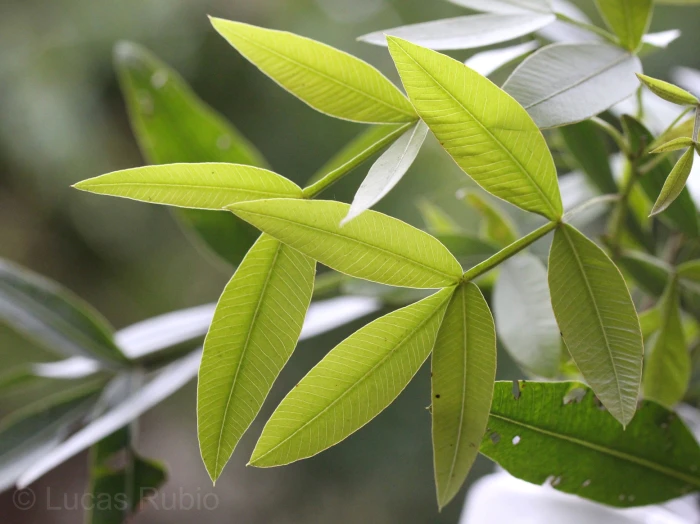Aroeira Salsa
(Lithraea molleoides)
Aroeira Salsa (Lithraea molleoides)
/
/

© Lucas Rubio
CC BY 4.0
Image By:
© Lucas Rubio
Recorded By:
Copyright:
CC BY 4.0
Copyright Notice:
Photo by: © Lucas Rubio | License Type: CC BY 4.0 | License URL: http://creativecommons.org/licenses/by/4.0/ | Uploader: lrubio7 | Publisher: iNaturalist |






















Estimated Native Range
Climate Requirements for Conway, Arkansas
| This Plant | Your Site | Plant Suitability for Your Location | ||
|---|---|---|---|---|
| • Precipitation | 46" - 64" | 50" | Aquatic | Aquatic |
| • High Temp. | 79°F - 90°F | 93°F | Your summer temperatures are normal for this plant. | Excellent |
| • Low Temp. | 36°F - 54°F | 28°F | Your winter temperatures are normal for this plant | Excellent |
This plant should grow very well at your location without additional irrigation.
Summary
Lithraea molleoides, also known as Aroeira Salsa, is a deciduous tree native to the dry forests, savannas, and scrublands of South America, particularly in Argentina, Uruguay, Bolivia, and the Cerrado biome of Brazil. It typically grows to a height of 8-26 feet (2.4-7.9 meters) and has a spreading habit. The tree is characterized by its pinnate leaves and small, yellowish-white flowers that bloom in clusters. Despite its potential as an ornamental plant due to its attractive foliage and form, it is not commonly used in landscaping.
Aroeira Salsa is known for its production of allergenic volatile substances, which can cause skin irritation, fever, and visual problems, making it unsuitable for public spaces or residential gardens. It requires full sun to part shade, well-drained soils, and can tolerate drought conditions once established. However, due to its potential health risks and the difficulty in handling the plant without causing allergic reactions, it is rarely cultivated. Gardeners should be aware of its toxic effects and handle it with care, if at all.CC BY-SA 4.0
Aroeira Salsa is known for its production of allergenic volatile substances, which can cause skin irritation, fever, and visual problems, making it unsuitable for public spaces or residential gardens. It requires full sun to part shade, well-drained soils, and can tolerate drought conditions once established. However, due to its potential health risks and the difficulty in handling the plant without causing allergic reactions, it is rarely cultivated. Gardeners should be aware of its toxic effects and handle it with care, if at all.CC BY-SA 4.0
Plant Description
- Plant Type: Tree, Shrub
- Height: 10-20 feet
- Width: 8-12 feet
- Growth Rate: Moderate
- Flower Color: Green, Yellow
- Flowering Season: Summer
- Leaf Retention: Evergreen
Growth Requirements
- Sun: Full Sun, Part Shade
- Water: Medium
- Drainage: Medium, Fast
Common Uses
Bee Garden, Bird Garden, Butterfly Garden, Low Maintenance
Natural Habitat
Native to the dry forests, savannas, and scrublands of South America
Other Names
Common Names: Vinal, Vinagrillo
Scientific Names: Lithraea molleoides, Lithraea aroeirinha, Lithraea aroeirinha, Lithraea gilliesii, Lithraea lorentziana, Lithraea lorentziana, Lithraea lorentzii, Lithraea lorentzii, Lithraea molleoides var. lorentziana
GBIF Accepted Name: Lithraea molleoides